With garden spaces becoming smaller around our urban and suburban homes, the espalier is enjoying a revival. To espalier is to train trees, shrubs and vines on a frame (also called an espalier) so they grow into a flat plane, an ancient horticultural practice. A French word, “espalier” is derived from the Italian “
spalliera,” which means “something to rest the shoulder [
spalla] against.” The Romans originated the technique, and medieval Europeans refined it into an art as they trained fruit trees to grow against cloister walls. Today’s gardeners are rediscovering the technique’s usefulness and beauty.
Whether trained into traditional patterns or allowed to meander more informally, espaliers are living sculptures. (The word “espalier” is also used to describe the trained plants.) Choosing the form your espalier will take with your garden in mind will help reinforce your garden’s style and feeling. Here are six design ideas to consider.
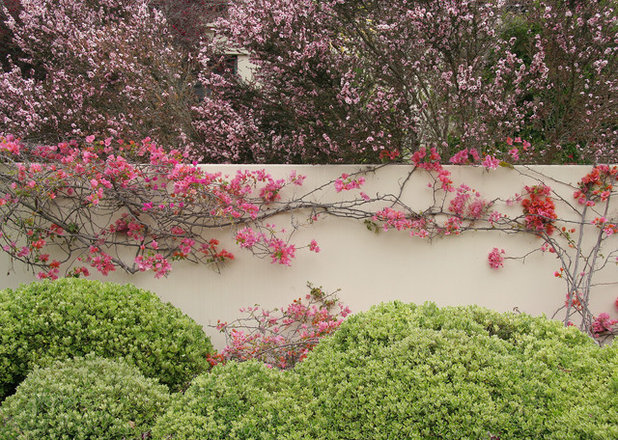
Donna Lynn - Landscape Designer
1. Informal espaliers. Many plant species are suited for informal or free-form patterns, which work well with a number of garden styles, including modern, Asian, and cottage. Positioning an informal espalier at eye level, as with this bougainvillea, gives it prominence.
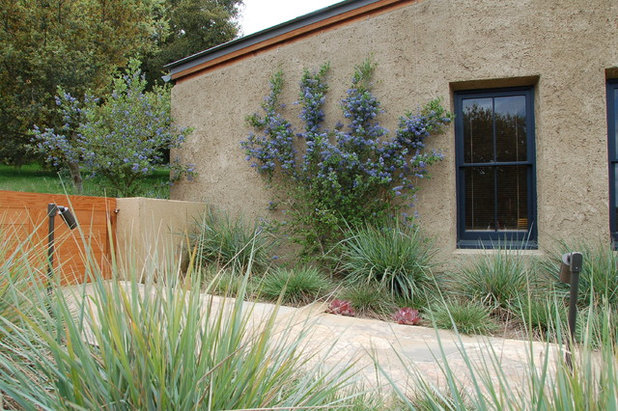
Joni L. Janecki & Associates, Inc.
An informal espalier within a naturalistic planting design can be a welcome surprise. This exuberant and unexpected Ceanothus enlivens the native planting surrounding it.
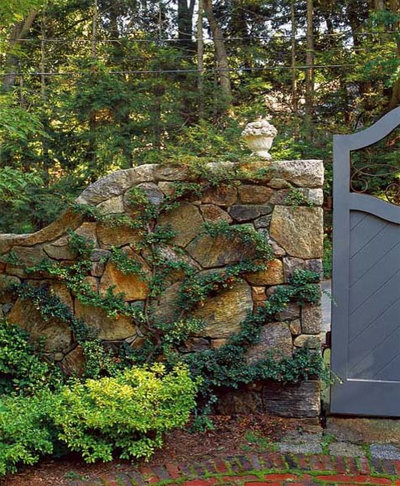
Julie Moir Messervy Design Studio (JMMDS)
The seemingly random zigzag of this scarlet firethorn (
Pyracantha coccinea) mimics and reinforces the pattern of the stone wall behind.
Informal designs usually do not require the kind of supporting framework given to formal espaliers — although it’s a good idea to provide some while the plant is becoming established.
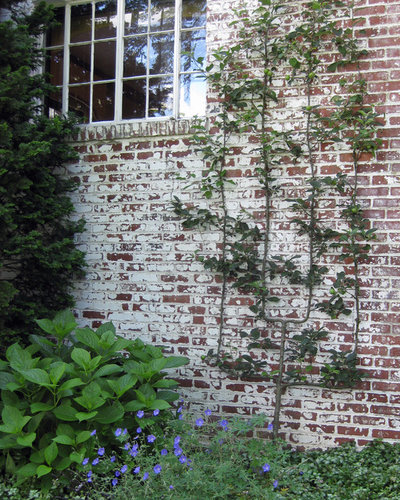
Susan Cohan, APLD
2. Formal espaliers. Get out your clippers. For those who love to snip, a formal espalier is an elegant choice. Traditional patterns include cordon (a single branch), multiple cordon (U shaped), tiered patterns, fence patterns and fans (palmettes).
In this example an espaliered pear tree in a double U pattern makes use of limited space and leads the eye upward. A vertical design such as this can make a distinctive statement in a small urban courtyard.
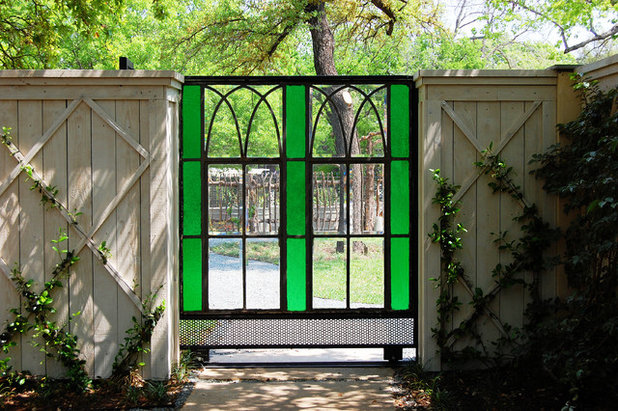
Archiverde Landscape Architecture
A Belgian fence (or lattice pattern) makes a stylish adornment for a blank wall. This type of espalier can be a bit complicated if trees trained as single cordons are used, but vines lend themselves quite readily to this pattern.
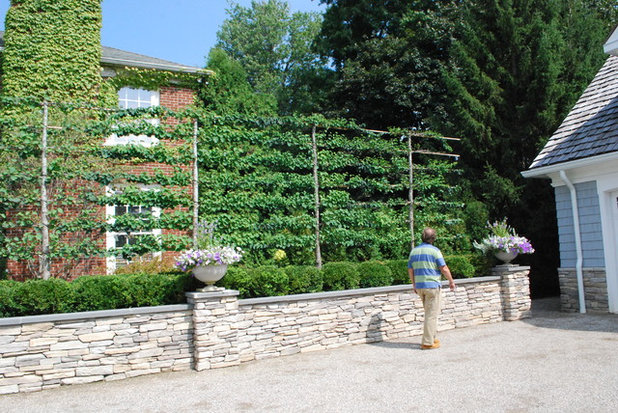
Deborah Silver and Co Inc
3. Privacy screens. Espaliered katsuras planted in a raised planter provide screening from an adjacent home here. Grown as a tiered set of horizontal cordons, this is one of the easiest of the formal espalier patterns to create.
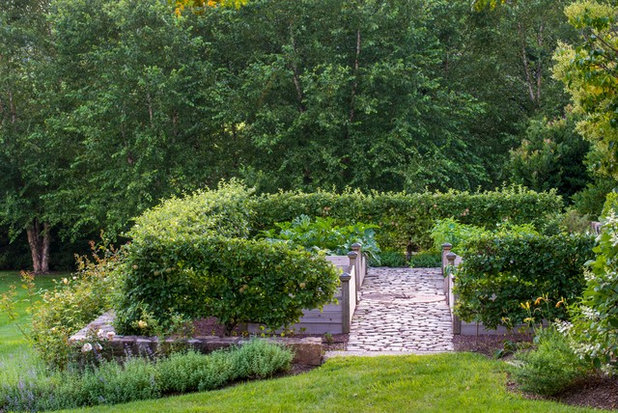
Dear Garden Associates, Inc.
4. Living fences. What could be lovelier than an espaliered fruit tree in a kitchen garden? Apple trees make a low living fence in this potager. Pear trees are also commonly espaliered (although apple trees are reportedly easier to train). In warm climates citrus, figs and olives can be trained into informal patterns.

Pedersen Associates
5. In a narrow space. Espaliered camellias line this shady passageway. Try grouping the same espalier pattern in odd numbers to create rhythm and interest along a long side yard. Though deciduous, Japanese maple (
Acer palmatum) also makes a stunning espalier for shade.
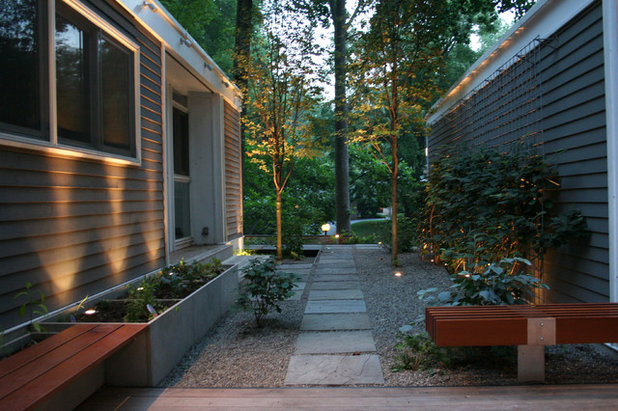
JHLA | Jennifer Horn Landscape Architecture
Do you have a blank wall outside an important window in your home? Follow the example here; espaliered witch hazel on welded wire mesh creates a dynamic view across from a kitchen.
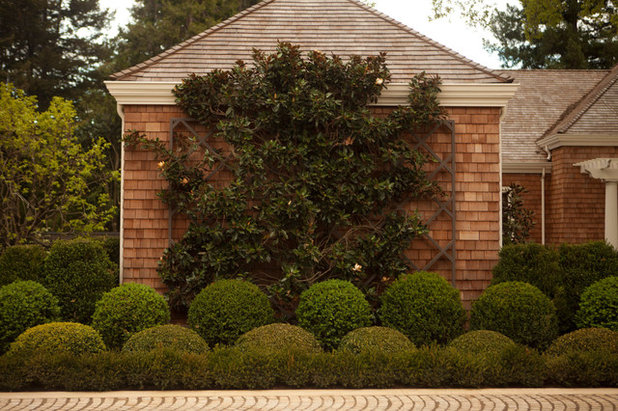
Zeterre Landscape Architecture
6. Dramatic backdrops. Planting in layers of differing heights creates drama in the garden, and an espalier can provide a background layer in minimal space. In addition to this Southern magnolia, evergreens such as loquat, pyracantha (firethorn) and upright yew make excellent espaliers.





